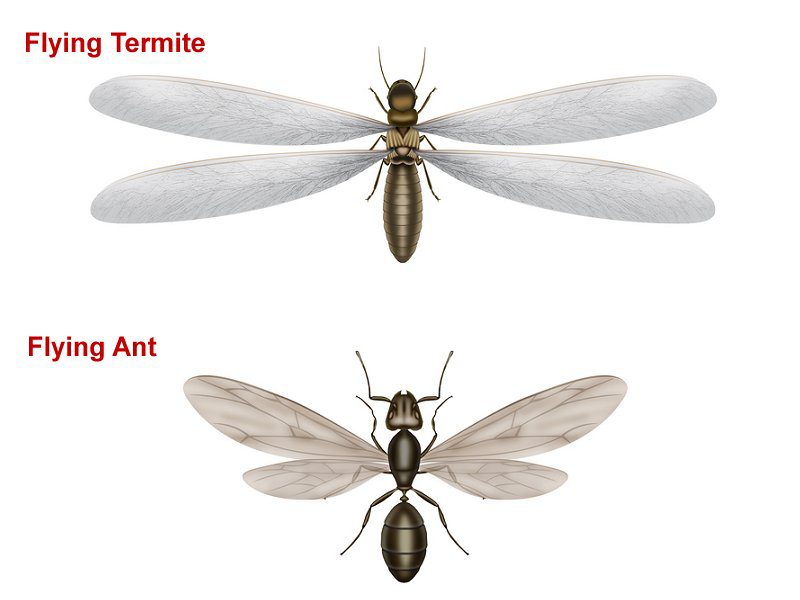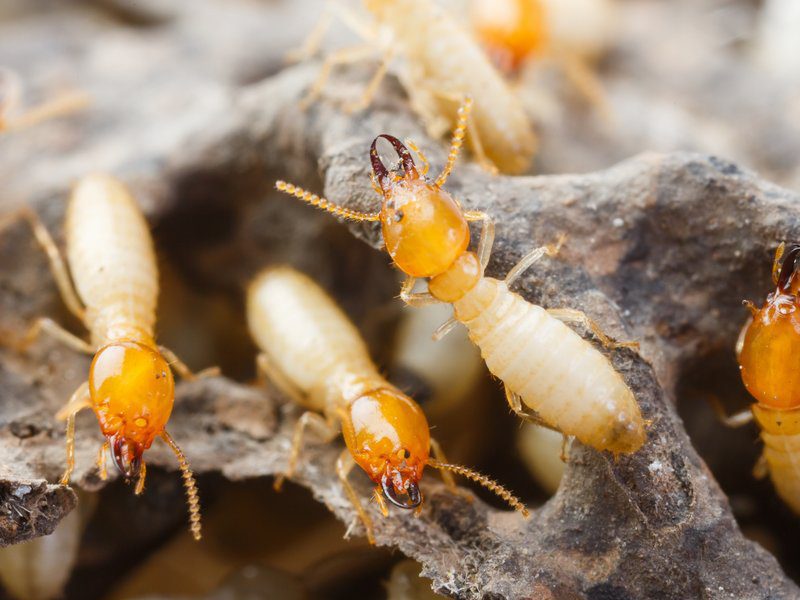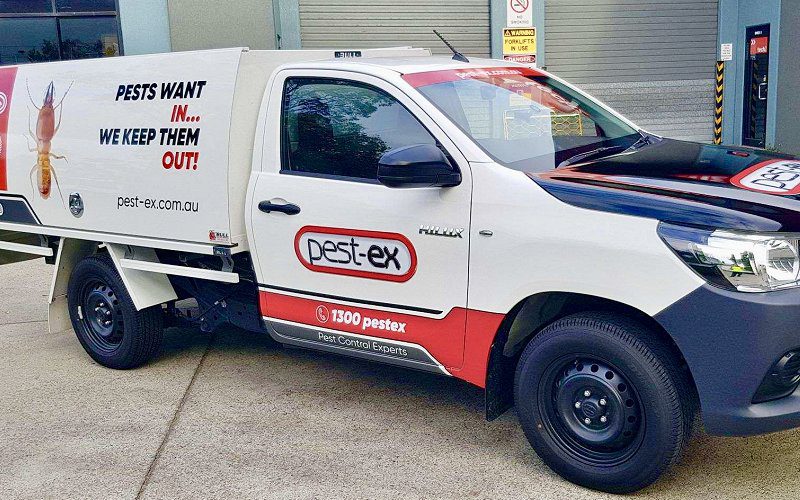
Australian operated

Australian operated
Free on-site visit & quote
Over 14,000+ homes protected
5/5 stars is most frequent rating

“Last night we noticed all these flying bugs around our house and this morning there’s wings everywhere. We’re not sure if they’re ants or termites, what should we do?”
 Flying termites are often mistaken as flying ants. There are a few differences with the main one being – ants won’t eat your home. Here’s some advice and tips.
Flying termites are often mistaken as flying ants. There are a few differences with the main one being – ants won’t eat your home. Here’s some advice and tips.As professional pest control technicians we’re always giving advice to homeowners about the dangers of termites, and in particular, the differences between flying termites and ants. However there is often still a great deal of confusion around how to tell them apart, and what the risks are – especially if incorrectly identified.
For most homeowners and can be quite easy to mistake flying termites for flying ants because both species look similar from afar and typically swarm around the same time of year.
Flying ants have different-sized pairs of wings compared to flying termites that have two pairs of similar sized wings. Flying ants have antennae that are bent at 90-degree angles whereas Termites have straight antennae. Termites of course can cause serious damage to your property if left untreated. Given such small differences between the two, it’s easy to see why they are often confused.

Winged termites have a tendency to swarm during the spring and summer months. Around this time of year, rainfall increases, which in turn increases ambient air temperatures and humidity which are ideal conditions for swarmers.
If you see swarms of flying termites anywhere near your home it’s undoubtedly a warning sign and something that should be taken seriously for 2 very valid reasons –
While swarmers are a clear indication of termite activity, it’s not the winged termites that you need to be concerned about, it’s the offspring that will eventually nest. If left untreated they have the potential to cause significant damage in a very short space of time.
Flying termites from several colonies will usually take flight at the same time. They do this as they mature sexually, as a way of finding mates. Termites might swarm in there thousands, travelling various distances away from their main nest in an effort to start a new termite colony.
The female and male winged termites or ‘Alates’ as they’re referred to will take flight and mate mid-air, before falling back down to the ground. That’s why it’s often described as a ‘nuptial’ or ‘colonising’ flight. The pregnant females will begin looking for a new location to start a breeding colony as the Queen.

If you’ve noticed dried out wings on the floor or on your window sills this is a good sign you’ve got a potential termite problem. After mating females discard their wings and look for nesting grounds, which might include your roof void, or elsewhere within the home. Subterranean termites on the other hand will dig into the soil to start new colonies underground.
If you find winged termites inside, it’s more than likely that you have an existing problem and that termites are already nesting in your home. Of course they may be cases where they’ve gained entry through an open window or unsealed entrance. On the other hand, if you’ve noticed flying termites outside, (especially around external lighting) it would indicate that there’s a colony nearby.
As always it’s best to schedule a termite inspection to ensure your home is protected.
Regular inspections of your home should be part of an ongoing maintenance and prevention plan in order to protect your home. It’s also the most effective way of detecting early signs of any potential infestations.
Other preventative measures you can implement include
Termites are among the most damaging insects and can cause severe structural damage if left untreated.

If you’re concerned you might have a termite problem, or you’ve found what look to be flying termites – or even if you’re unsure – get in touch and we’ll come out to your home and perform an inspection. Our termite inspections are fast, accurate and affordable, and come with a detailed report which outlines our findings.
Call us today and one of our friendly technicians will help you schedule an inspection.







